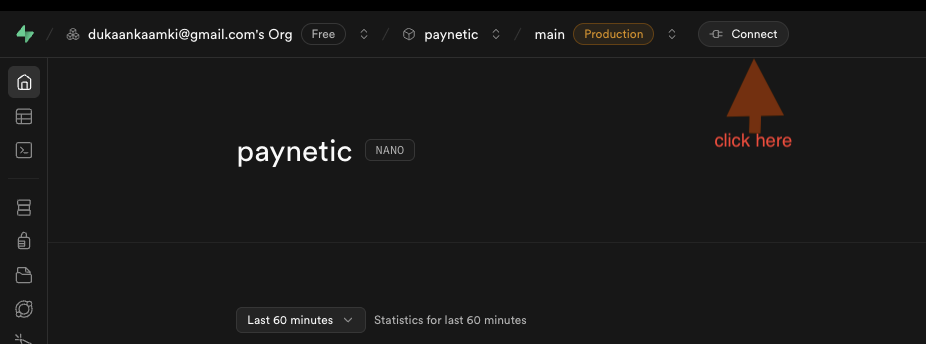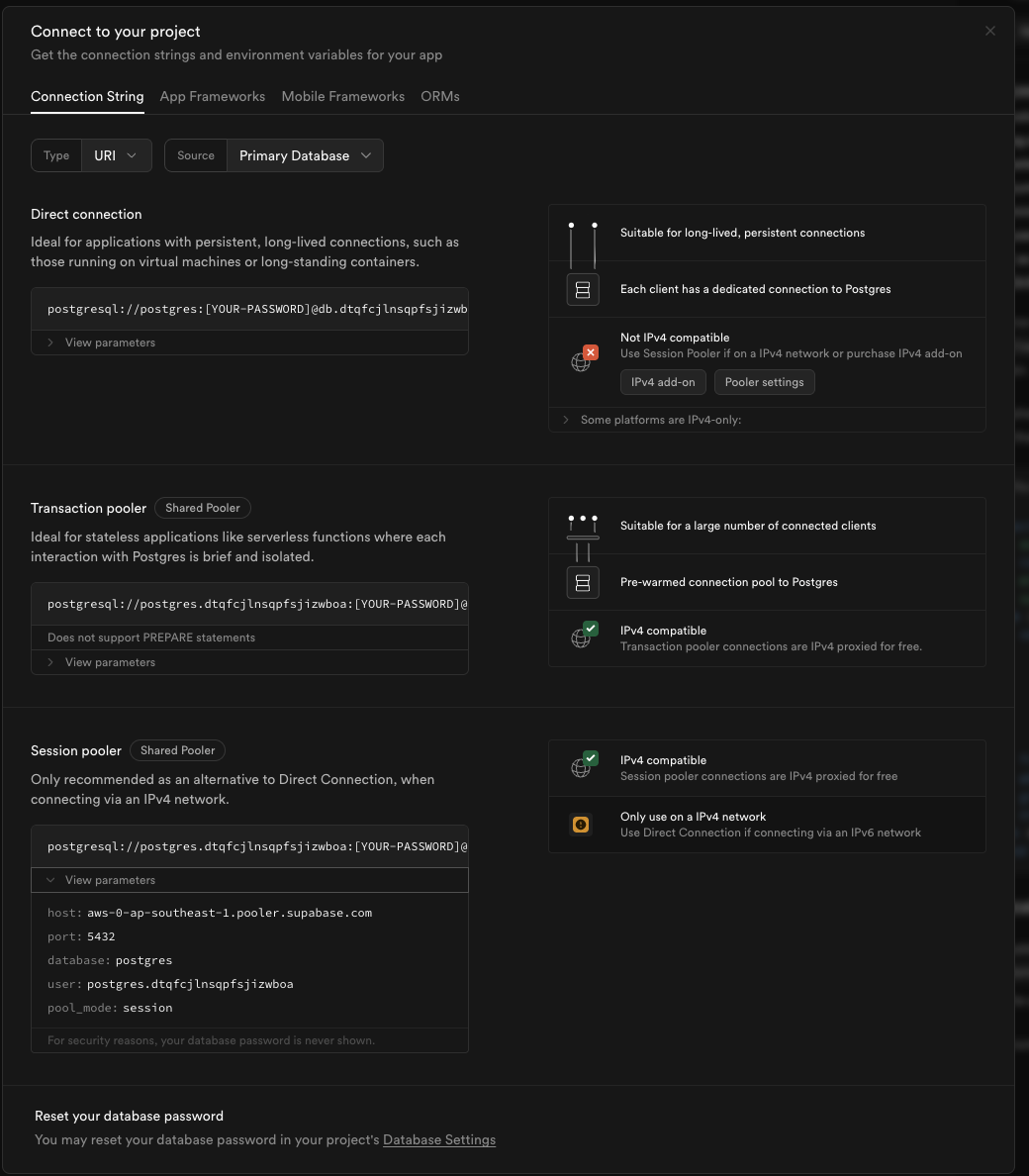How to Get Your Supabase Database URL and Run SQL Queries with Edge Functions
Kartik kalia

Supabase makes it easy to use a powerful PostgreSQL database in your projects. However, for security and best practices, Supabase does not provide a direct way to run arbitrary SQL queries from the dashboard or client-side code.
You should always run SQL queries from your backend or serverless (edge) functions.
1. How to Get Your Supabase Database URL
To connect to your Supabase database, you need the connection string (URL). Here’s how to find it:
Step 1: Open Your Project and Click “Connect”
Go to your Supabase project dashboard.
Click the Connect button in the top right corner:
 Click the “Connect” button to open the connection options.
Click the “Connect” button to open the connection options.
Step 2: Copy the Database Connection String
A modal will appear with several connection options:
- Direct connection
- Transaction pooler (recommended for serverless/edge functions)
- Session pooler
For most backend and edge use cases, copy the Transaction pooler connection string:
 Copy the connection string for your preferred pooler type. For serverless and edge functions, use the Transaction pooler.
Copy the connection string for your preferred pooler type. For serverless and edge functions, use the Transaction pooler.
Tip:
- Use the Transaction pooler for stateless, serverless, or edge environments.
- Use the Direct connection only for long-lived, persistent connections (e.g., VMs or containers).
- The Session pooler is for IPv4-only networks.
2. How to Run SQL Queries Using the Database URL
Install the pg package:
npm install pgExample code to run a SQL query:
const { Pool } = require('pg')
// Use your Transaction pooler connection string from Supabase
const pool = new Pool({
connectionString: 'postgresql://postgres:[YOUR-PASSWORD]@aws-0-ap-southeast-1.pooler.supabase.com:5432/postgres?sslmode=require'
})
async function runQuery() {
const client = await pool.connect()
try {
const res = await client.query('SELECT NOW()')
console.log(res.rows)
} finally {
client.release()
}
}
runQuery().catch(console.error)You can use the connection string in your Edge Function with a Deno Postgres client:
import { serve } from 'https://deno.land/std@0.168.0/http/server.ts'
import { Pool } from 'https://deno.land/x/postgres@v0.17.0/mod.ts'
const pool = new Pool({
hostname: Deno.env.get('DB_HOST'),
database: Deno.env.get('DB_NAME'),
user: Deno.env.get('DB_USER'),
password: Deno.env.get('DB_PASSWORD'),
port: 5432,
tls: { enabled: true },
max: 10,
})
serve(async (req) => {
const client = await pool.connect()
try {
const result = await client.queryObject('SELECT NOW()')
return new Response(JSON.stringify(result.rows), { headers: { 'Content-Type': 'application/json' } })
} finally {
client.release()
}
})Set your environment variables (DB_HOST, DB_NAME, etc.) using the values from your Supabase connection string.
Important Security Note
- Never expose your database connection string in client-side code.
- Always run SQL queries from your backend or edge/serverless functions.
- Supabase recommends using their client libraries for most operations, but for custom SQL, always use a secure backend.
Summary
- Get your database URL from the Supabase dashboard via the Connect button.
- Use the Transaction pooler connection string for most backend/edge/serverless use cases.
- Run SQL queries using the
pgnpm package (Node.js) or a Deno Postgres client (Edge Functions). - Never run SQL queries directly from the client or expose your credentials.
Happy coding!
Written by Kartik kalia
Web developer and technical writer passionate about creating exceptional digital experiences.